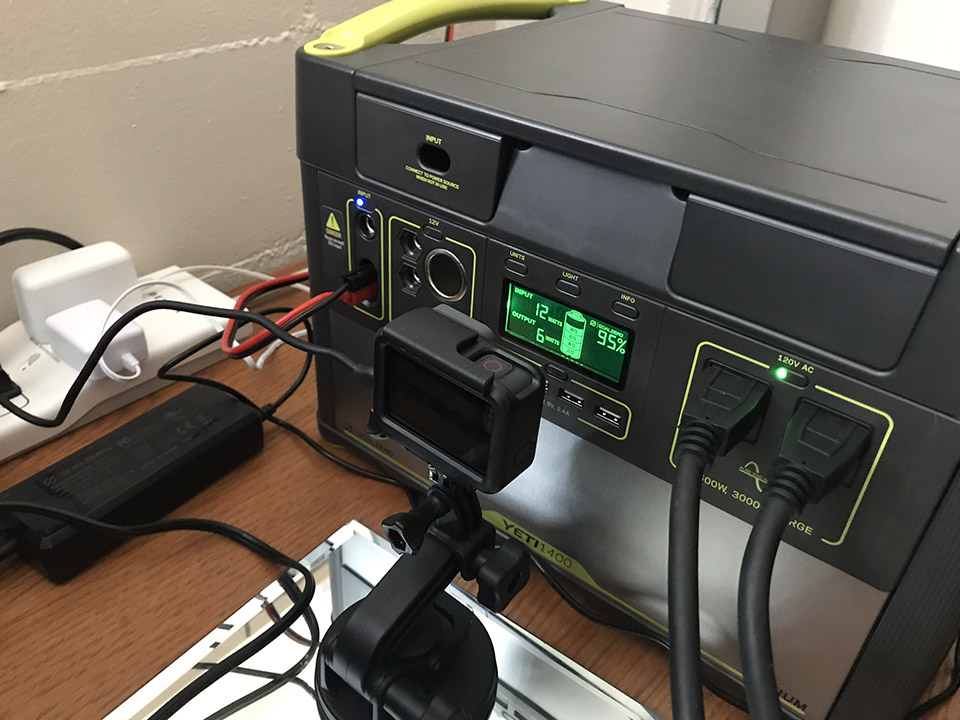Brooke Fisher
April 2, 2018

Team members include engineering technician Yiming Liu, professor Dorothy Reed, assistant professor Amy Kim and post-doc Shuoqi (Stanley) Wang, from left.
Energy conservation came to life for many students during winter quarter when solar panels on the roof of More Hall harvested energy from the sun to power everyday office equipment, from a desktop computer to a table lamp.
The solar panels were installed as part of the graduate-level course CEE 599, taught by assistant professor Amy Kim. The class focuses on developing sustainability strategies for buildings that promote the health and wellness of occupants.
“The students enjoyed the hands-on learning experience and many had follow-up questions,” Kim said. “The next iteration may include students getting involved more with assisting in collecting and analyzing data from the unit.”
In preparation for the class project, four solar panels were installed on the roof of More Hall in fall 2017. The harvested energy is transported from the rooftop to a power station located inside Kim’s first-floor office.
 |
| The energy harvested from the solar panels is transported from the rooftop to a power station. |
The amount of energy harvested per day was dependent on the weather. Data collected in December 2017 showed that days with clear skies generated as much as 962 Wh and overcast days as little as 97 Wh. On an average day, 455 Wh was generated, which was enough power to operate the following office devices together for just over one hour:
- Dyson Heater Fan set to 74 degrees Fahrenheit (241.79 Wh average hourly energy consumption)
- Dell Desktop All-in-one (49.33 Wh average hourly energy consumption)
- Dell XPS Laptop (38.63 Wh average hourly energy consumption)
- Dell Monitor (21.34 Wh average hourly energy consumption)
- Task Lamp (11.04 Wh average hourly energy consumption)
- iPhone Charger (0.52 Wh average hourly energy consumption)
- Standing Desk (0.25 Wh average hourly energy consumption)
- iPad Charger (0.01 Wh average hourly energy consumption)
“We believe that in the future, these self-sufficient power stations will complement grid-based power in buildings to provide continuous, permanent electricity even when the grid goes down because of winter storms or an earthquake,” Wang said. “In order to be effective, these small systems would need to be placed in every regularly occupied room of a building. Ultimately, these systems would make the building more resilient.”
As the majority of buildings do not easily accommodate energy conservation equipment, such as solar panels, the team acknowledges that building designs may need to be updated.
“We see a gap between these self-sufficient power systems, as they currently don't integrate seamlessly into the building envelope. They are treated as an add-on and we think they should be embedded into the building from the design stage,” Kim said.
Although the course has wrapped up, the solar panels are still active and the team is planning to expand the system with a small wind-turbine in the near future.
Team members include professor Dorothy Reed, assistant professor Amy Kim, post-doc Shuoqi (Stanley) Wang, engineering technician Yiming Liu, with assistance from environmental lab manager Sean Yeung.